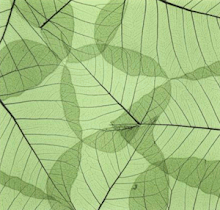Tuesday, June 7, 2011
Summer Meditation Challenge! (Day 6 and 7)
We just returned from a lovely meal with Linda and Mitchell Polk, my sister and brother-in-law. We ate at The Old School Mill and Fresh House Restaurant in Locust, NC, about 20 miles NE of Monroe.
 r
r
The food was decent, the decor entertaining, and the company was great. As I said, a lovely visit.
Shortly before Linda and Mitchell arrived to escort is to The Fresh House, I finished up 35 minutes of sitting meditation. I was practicing a new approach to "following the breath" to achieve "access concentration." The technique was an adaptation of the tecnique advocated by Buddhadasa Bikkhu here.
Sati is able to pay attention to the entire path of the breath from the inner end point (the navel or the base of the abdomen) to the outer end point (the tip of the nose or the upper lip). However fine or soft the breath becomes, sati can clearly note it all the time. If it happens that we cannot note (or feel) the breath because it is too soft or refined, then breathe more strongly or roughly again. (But not as strong or rough as before, just enough to note the breath clearly). Fix attention on the breathing again, until sati is aware of it without any gaps. Make sure it can be done well, that is, keep practicing until even the purely ordinary, unforced breathing can be securely observed. However long or short it is, know it. However heavy or light it is, know it. Know it clearly within that very awareness as sati merely holds closely to and follows the breathing back and forth the whole time you are meditating [2]. When you can do this it means success in the level of preparation called "chasing after all the time."
The adaptation was to visualize the movement of the breath as three dimensional rather than two dimensional. The start point of inhalation is the nostril; the end of inhalation is the fully expanded lung-space. The start point of exhalation is the fully-expanded lung-space and the end of exhalation is--of course--the nostril.
This worked for me!.. Visualizing the entire path of air during inhalation and exhalation, I was able to stay focused for the entire 35 minutes. My attention wavered only once. The goal is to practice such that this can be done effortlessly and quickly, entering the state of access concentration so as to study the four foundations of mindfulness.
As for yesterday's meditation--Day 6--the combination of sleepiness and too much wine brought me to The Land of Sloth and Torpor. A bust.
 r
rThe food was decent, the decor entertaining, and the company was great. As I said, a lovely visit.
Shortly before Linda and Mitchell arrived to escort is to The Fresh House, I finished up 35 minutes of sitting meditation. I was practicing a new approach to "following the breath" to achieve "access concentration." The technique was an adaptation of the tecnique advocated by Buddhadasa Bikkhu here.
Sati is able to pay attention to the entire path of the breath from the inner end point (the navel or the base of the abdomen) to the outer end point (the tip of the nose or the upper lip). However fine or soft the breath becomes, sati can clearly note it all the time. If it happens that we cannot note (or feel) the breath because it is too soft or refined, then breathe more strongly or roughly again. (But not as strong or rough as before, just enough to note the breath clearly). Fix attention on the breathing again, until sati is aware of it without any gaps. Make sure it can be done well, that is, keep practicing until even the purely ordinary, unforced breathing can be securely observed. However long or short it is, know it. However heavy or light it is, know it. Know it clearly within that very awareness as sati merely holds closely to and follows the breathing back and forth the whole time you are meditating [2]. When you can do this it means success in the level of preparation called "chasing after all the time."
The adaptation was to visualize the movement of the breath as three dimensional rather than two dimensional. The start point of inhalation is the nostril; the end of inhalation is the fully expanded lung-space. The start point of exhalation is the fully-expanded lung-space and the end of exhalation is--of course--the nostril.
This worked for me!.. Visualizing the entire path of air during inhalation and exhalation, I was able to stay focused for the entire 35 minutes. My attention wavered only once. The goal is to practice such that this can be done effortlessly and quickly, entering the state of access concentration so as to study the four foundations of mindfulness.
As for yesterday's meditation--Day 6--the combination of sleepiness and too much wine brought me to The Land of Sloth and Torpor. A bust.
Subscribe to Comments [Atom]

Post a Comment